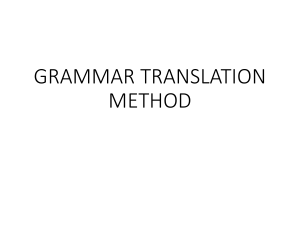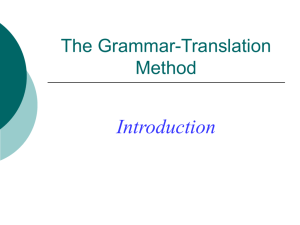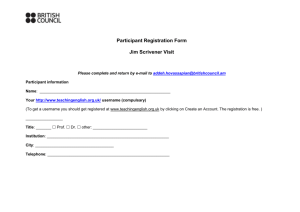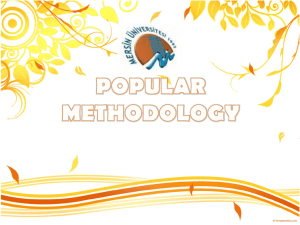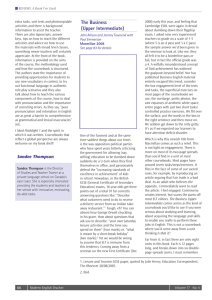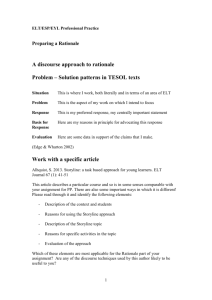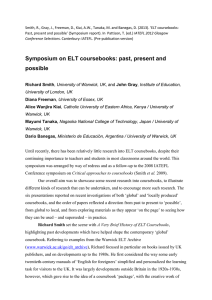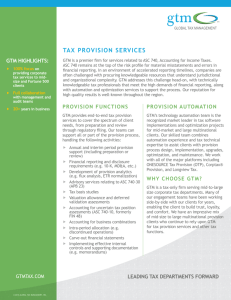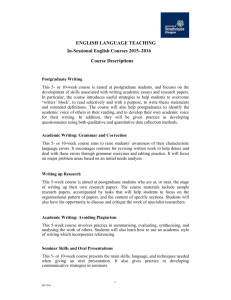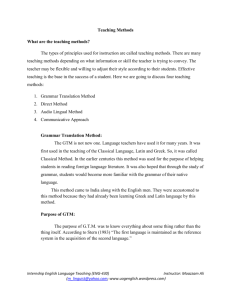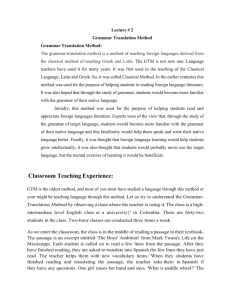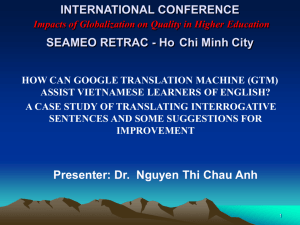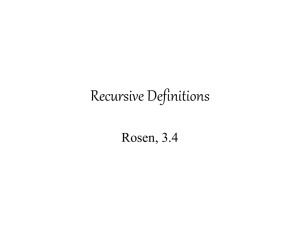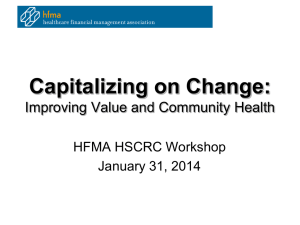Keywords in TEFL - NymE
advertisement
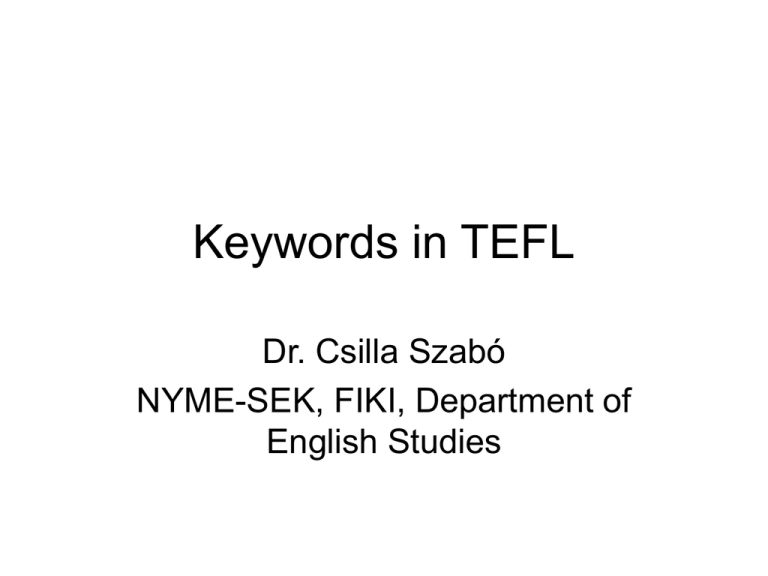
Keywords in TEFL Dr. Csilla Szabó NYME-SEK, FIKI, Department of English Studies Approaches vs. methods Approach: • A theory about the nature of language and language learning • 1. Structural view ALM, TPR. Silent Way • 2. Functional view semantic and comm. dimension • 3. Interactional view lg is seen as a vehicle for social transaction bw individuals method approach design procedure ELT methods 1. GTM (Grammar Translation Method) • Deductive, L1 is used for explanation • Literature-centred (TL literary texts are used – authentic!) • Central activity: translation • Memorisation of vocabulary lists • Errors are not tolerated What can we use from GTM? • Memorisation of words can be useful • Translation (should not be excluded from the classroom) – integrated skills • Reading authentic literature is always a plus ------------------------------------------------------• Coursebooks available: Budai László, Angol (TK), Tanuljunk Nyelveket ELT methods 2. Direct Method (DM) • In response to GTM • Inductive learning • Lg is for speaking – focus on oral skills • L1 is not allowed • Not about lg., the lg. itself • SS’s self correction • Pictures, sample sentences, dialogues • Vocab over grammar • Learning occurs naturally What shall we keep from DM? • Inductive approach • More vocab than grammar • Lg is for communication – focus on oral skills ---------------------------------------------------Coursebook available: ? ELT methods 3. The Audio-lingual Method • Background: behaviourism / habit formation • Stimulus-response-reinforcement • Learning is inductive. • Habit formation by means of repetitions and other mechanical drills. • Natural order of skills. 1. Listening, 2. Speaking, 3. Reading, 4. Writing. • Culture is presented in dialogues (SS memorise them) • Meaning directly, no explicit rules • Focus on pronunciation (oral skills + writing) • L1 is not allowed – may lead to wrong habits in L2 What shall we keep from ALM? • Drills – necessary in the phase of accurate reproduction (meaningful, not mechanical!) • Focus on pronunciation (minimal pairs) • Lots of listening ---------------------------------------------------• Coursebooks: Streamline, Strategies Methods: the Humanistic tradition I. 1. Silent Way (C. Gattegno) • • • • • • • • Theoretical background: cognitive psychology Lg = rule formation (not habit!) – inductive learning T = facilitator, silent while teaching! SS actively explore the lg. Focus on vocab by visual aids, charts, colour rods No formal testing Errors are natural – SS self-correct Cooperation and enjoyable classroom atmposhere What shall we keep from Silent Way? • Discovery techniques • Great for certain areas • Word charts to recycle vocabulary • Cooperation and relaxed atmosphere ------------------------------------------------------• No coursebooks available Methods: the Humanistic tradition I. 2. Suggestopedia (G. Lozanov) • No psychological barriers • SS feelings are respected • Infantilisation (T = parent) • Varying intonation to avoid boredom • Materials presented with music and rhythm • Physical features of classrom (cosy) • Pseudo-passive learning attitude • Minimal grammar, large vocabulary What shall we keep from Suggestopedia? • • • • Respect SS’ feelings Focus on rhythm and intonation Again, OK a few times a year Less focus on grammar (see: English as lingua franca) --------------------------------------------------• Relaxa-books, „villám angol” Methods: the Humanistic tradition III: 3. CLL: Community Language Learning • True holistic/ „whole person” /non-defensive S A R D Security Attention & Aggression Retention & Reflection Discrimination • • • • • Self-reflection / recorded performance Focus on culture T = councellor L1 is used to clarify meaning Communication is the major goal/ but no pressure on SS, their feelings are central • Involve SS What shall we keep from CLL? • Reflective listening = students need quiet reflection time in order to learn – it’s a good idea to record SS and let them analyse their own performance Total Physical Response (TPR) • Innate Bio-program: - Listening first, “a blueprint” of lg + developnment of "a cognitive map" of the lg during listening process. • B) Brain Lateralisation: left and right hemisphere have different learning functions.With both hemispheres activated, learning is more effective. • C) Stress (an affective filter): The lower the stress is, the greater the learning What shall we keep from TPR? • Learning via action – imperatives, focus on non-verbal elements of comm. • More reliance on objects and visuals • Stress-free environment -----------------------------------------------------E.g. English Party / CA/CLT Communicative Approach: The goal of language teaching is to develop "communicative competence" Form-meaning-function together – focus on meaning Authentic materials Errors are tolerated Focus on motivation Principles of CLT • • • • • • • • Meaning is paramount Contextualisation Effective communication Judicious use of L1 Drilling at the initial phase Integrating all 4 skills + translation Understandable pronunciation High fluency + moderate accuracy • Techniques to achieve communicative competence: in the seminars
